17 of the Most Unusual Foods Around the World | Weird Food
One of the most amazing things about travelling is getting to try really interesting foods from around the world and what we Westerners might consider weird food that you may never see or have even heard of in your own country. Travelling for food is one of the mainstays of the travel blogger world and it is the best part of travelling we love exploring the unusual and interesting foods that we find and the food culture of different places in the world.
As food tourists, we often get asked about bizarre foods around the world and what we have found or eaten. Can’t say we have eaten much in the way of weird food as we believe that all food should be tried before calling it weird, and what is weird to us Westerners is not weird to another culture and may be considered insulting.
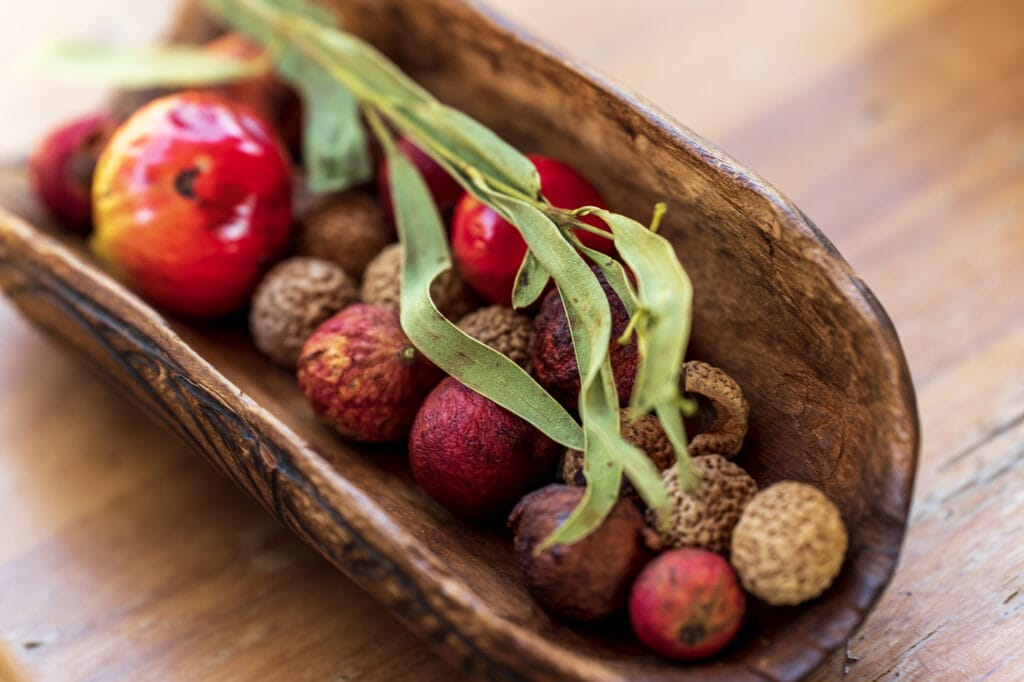
Of course, “weird food” is a bit judgemental. Often Westerners or Europeans simply don’t realize how tastes and food have changed over the years. What we consider weird food is very often the type of diet that the peasants or the rich would eat. It was all dependent on what was seasonal and available. I mean, after all, they used to consider lobster and crab weird food until they became the food of the rich and none of us could afford it.
What are foodies?
Wikipedia says that a Foodie is:
A foodie is a person who has an ardent or refined interest in food and who eats food not out of hunger but due to their interest or hobby. The terms “gastronome”, “gourmand” and “epicure” define the same thing, i.e. a person who enjoys food for pleasure.
I have been involved in the food business for over 25 years. I have owned restaurants, built food production facilities, mentored food entrepreneurs, and acted as a consultant to local agricultural businesses and government offices.
In a word, I am a foodie and in every new city I visit I track down a food market. I like to see what is locally grown, and what ingredients I can find that I have never seen or used before and am a huge fan of the farm-to-table movement and Slow Food.
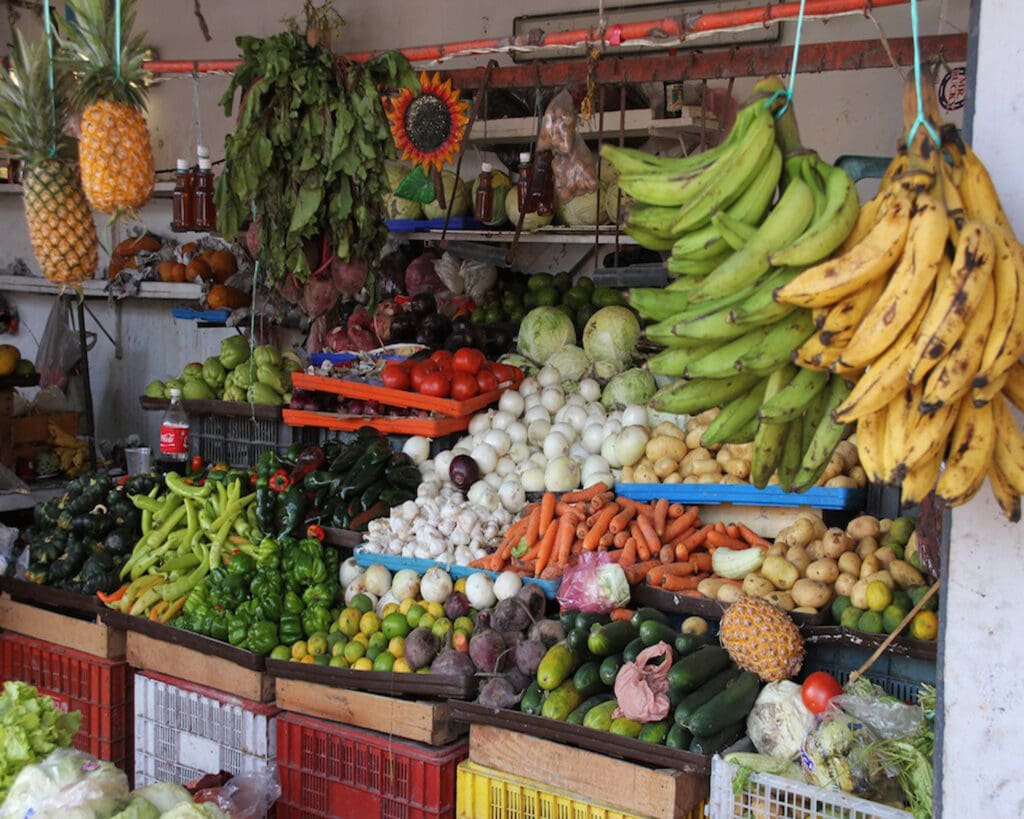
- 17 of the Most Unusual Foods Around the World | Weird Food
- What are foodies?
- Foodies and travelling for food
- Weird foods eaten around the world
- Silkworm Larvae in South Korea
- Escargot in Paris
- Cuy (koowee) in Peru
- Cobra Snake in Vietnam
- Duck's Feet & Liver Pancake in Kuala Lumpur
- Live Octopus in Korea
- Percebes in Portugal
- Scorpions in Beijing China
- Crocodile, Frogs and Woodworms in the Philippines
- Chapulines, Ant Eggs and Worms in Mexico
- Grilled Chicken Buttholes in Taiwan
- Casu Marzu in Italy
- Alpaca in Peru
- Arctic Edibles
- Eating unusual foods around the world is a travel blogger's dream – sometimes!
Foodies and travelling for food
For Westerners, haggis may be the food most feared when in Scotland, for other folks it might be the various cultures and countries that eat insects, for others, it’s food that is eaten alive. We travel bloggers like to immerse ourselves in other cultures and trying food that we may never have heard of or consider unusual is part of the wonder of travel.

Weird foods eaten around the world
These are some of my fellow foodie travel bloggers’ stories about the most unusual food they have eaten while travelling.
Silkworm Larvae in South Korea
One of the most unusual foods I’ve ever eaten was silkworm larvae, aka bundaegi, in South Korea. You can find it canned in most supermarkets but old women cook it on the street in giant vats of a fragrant brow broth. They smell worse than they look and they don’t look too appetizing but they taste surprisingly nutty. If you can get past the smell they taste surprisingly not bad. I wouldn’t say they are delicious (masheketa) but they are definitely a good source of protein and dirt cheap!

Bundaegi is typically eaten by old Korean men who will pair it with a bottle of rice wine (soju) and shovel them in. Foreigners like me usually stick to one at a time and often give the cup away after a few bites. But if you’re up for an adventure then “when in Rome” right? So be sure to put the cup up to your mouth and drink in these bugs when you visit South Korea. Written by Mike from LiveTravelTeach
Escargot in Paris
During our trip to Paris last year, we couldn’t pass by the numerous little cafes offering escargot. They seem to be all over the place, a kind of iconic dish for the French cuisine scene. The idea seemed crazy, but somehow just irresistible.
So we went for it, ordered one plate with 6 snails for two and sipped our wine pretending like we are just normal Parisians on their lunch break. Once the snails were served, we were surprised to find them in their shells. Now how are you supposed to eat that? Not that eating snails is weird in Paris of course but it is one of the weirdest foods to N. Americans.
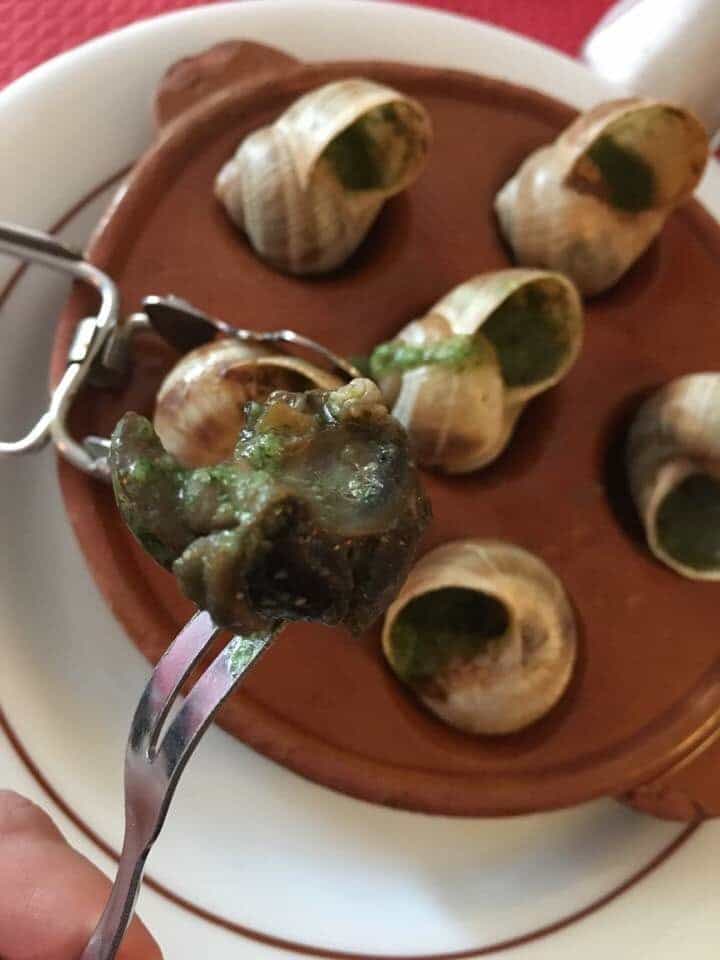
Luckily, the waiter guessed our confusion (thanks to mass tourism, they are used to serving clueless visitors) and made a small demonstration of how to handle the little delicacy. So here is how you do it: pick a piece of freshly baked white bread, grab the escargot in the shell with a fork, pull it out and place it on the bread along with all the sauce it has in the shell.
The taste is pretty amazing by the way. It reminded me of seafood – a bit like an octopus I think. And I bet it tastes that good because the French just know how to cook it. Back at home, we tried to prepare our own (found some deeply frozen snails in the supermarket), but it just didn’t taste the same. Maybe it’s the atmosphere, French wine or the holiday mood that made it so special. So when in Paris – go for it and try some escargot – you won’t regret it! Maria from the Tigrest Blog
Cuy (koowee) in Peru
We knew the moment we arrived in Cusco, Peru that we’d have to decide whether we wanted to try the local specialities of the Andes: alpaca and guinea pig. It was fairly easy to say yes to the first, as we treated it like mutton. But the latter was a much more difficult decision. I’d owned a guinea pig as a kid, and the furry little things were just so damn cute. All the locals we met kept on telling us how nutritious and delicious it is though, so finally, on our last full day in the Andes, we ordered a roasted guinea pig.
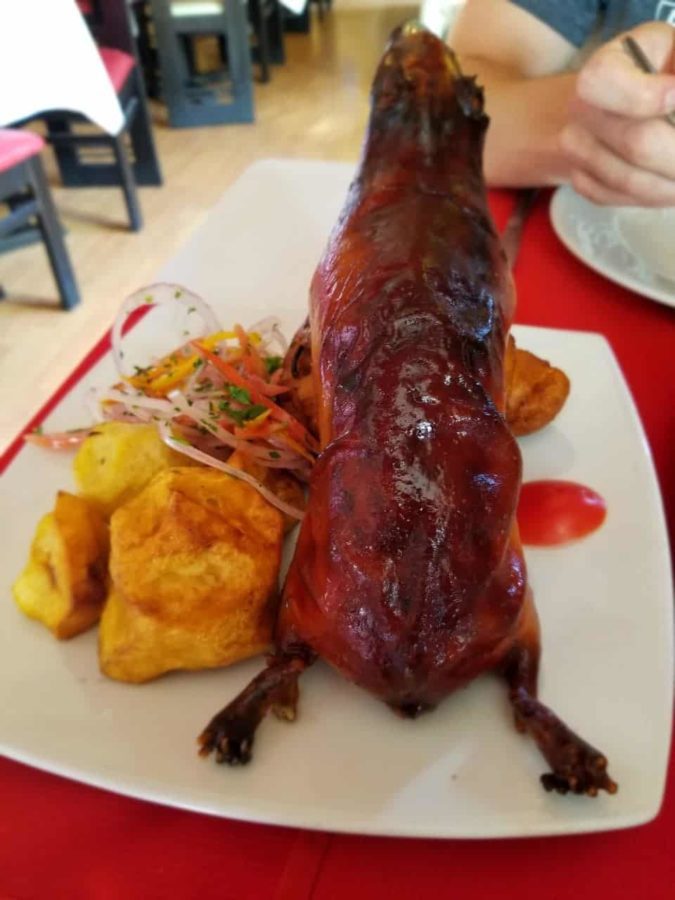
It was horrid. It showed up on our table propped up on a pile of potatoes and looking like it was screaming as it was cooked, its little claws and other features still very much intact. The restaurant quickly diced it up for us, but we had to ask them to get the head out of our sight before we could bring ourselves to dig in.
The meat was tougher and more sinewy than we expected and there was more fatty skin than meat. Thank goodness we’d ordered another dish as well so we could have another flavour palette and switch on and off with the guinea pig. We ate 80% of the guinea pig, but we just could not get ourselves to like it. I don’t regret trying it, but these days, I do feel a little guilty every time I see a pet guinea pig. Written by Rowena from A Nomad on the Loose
Weird Food around the world – remember that’s very subjective lol
Cobra Snake in Vietnam
While in Vietnam years ago I came across an opportunity to eat a cobra snake. A real delicacy and supposedly something that gives you superhuman vitality is eating the heart while it is still beating. After catching the snake and beheading it, the chef dropped the heart into a shot of vodka still beating and I shot it. Did it work? Not sure but I’m here to tell the tale and life has been as exciting if not more so since doing it. Would I do it again? Sure. Written by Rob at Stop Having a Boring Life
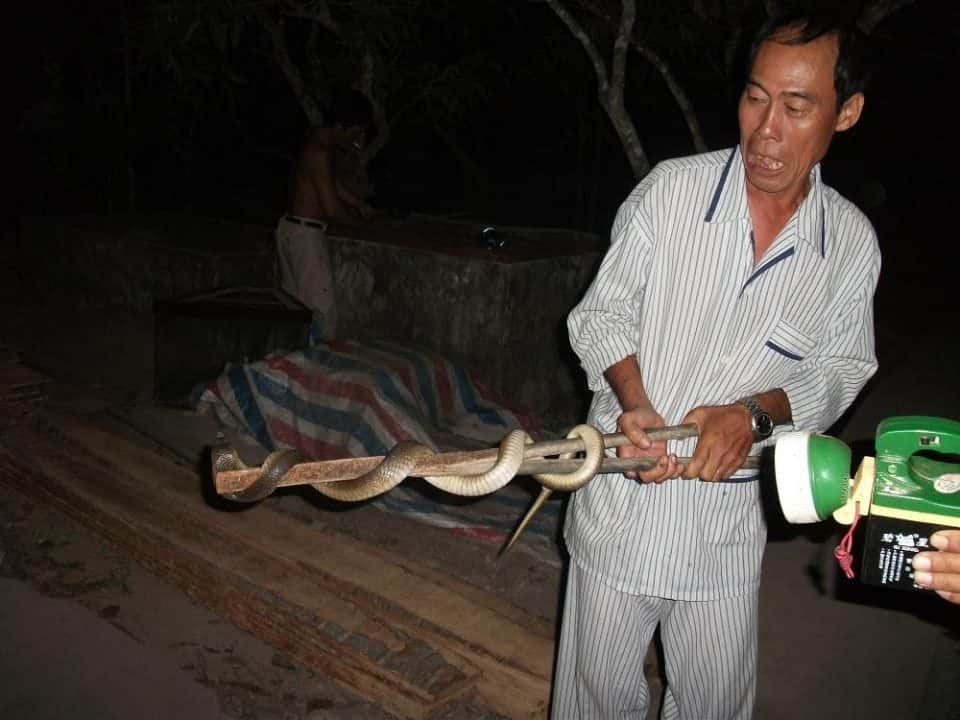
Duck’s Feet & Liver Pancake in Kuala Lumpur
If you find yourself in Kuala Lumpur, and you enjoy eating duck, then I highly recommend a visit to the famed Sze Ngan Chye cart. This little business is an institution in Kuala Lumpur and can be found on Petaling Street, the main thoroughfare of the city’s China Town. For the last 50 years, from the humble cart that has certainly seen better days, the Choong family have been serving up some of the tastiest and most moist salted roast duck.

They also offer, for the more adventurous, an intriguing little parcel made up of duck’s feet and liver, wrapped up using the bird’s intestines, then cooked in a salty and sweet sauce.
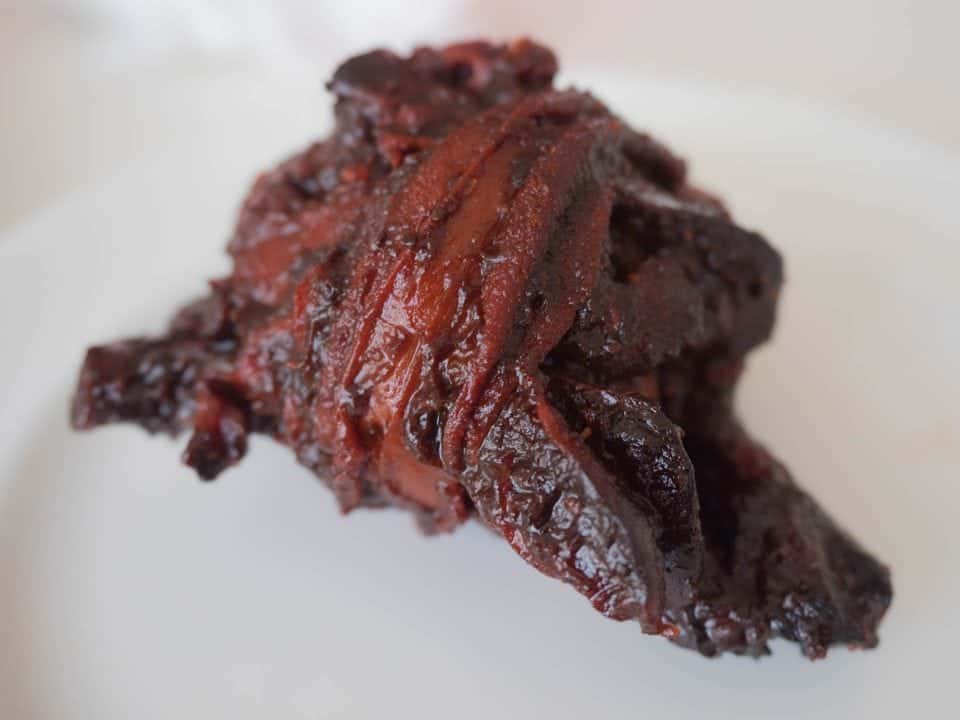
The tasting experience is interesting. The rich and succulent flavour of the sauce permeates the parcel, and although the flavour profile doesn’t change with each bite, the texture does as you move through the soft liver, the feet, and the chewy intestines. I found the taste quite pleasing, but the texture is an acquired experience, especially the intestines that were “stringy” in places.
As seen in many of the wonderful markets throughout Malaysia, it was pleasing to see the vendor using the excess parts of the duck, and at a little less than one dollar, it is worth an early trip to Petaling Street. Written by Markus from The Roaming Fork.
Live Octopus in Korea
When I lived in Seoul, South Korea for a few months, I got to know the Korean (food) culture quite well and soon learned about one of the local delicacies – living octopus! Obviously, I was quite reluctant to try this dish, but in my last weeks in the country, I felt like it was part of the real cultural experience and I should give it a try.
I visited a big fish market with a friend, right in the centre of Seoul, which is full of aquariums and all kinds of sea animals. We soon found a basin full of small octopuses swimming in the water. The nice Korean lady sold us one small octopus for a few Euros, and we got the animal alive in a small plastic bag full of water.
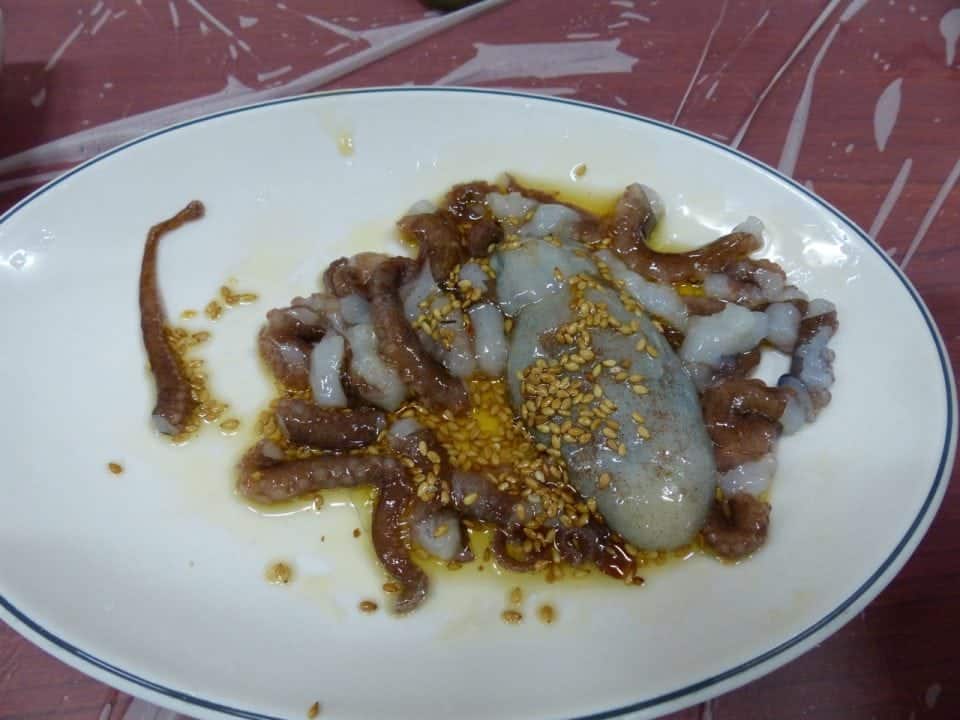
From there, we got sent to a nearby food kitchen in the market, where we sat down. A waitress took the bag and prepared our food – she actually cut the tentacles with a scissor, put everything on a plate, added some sesame and our dinner was served! It was crazy to watch the tentacles on the plate moving around and I had actually a hard time picking up a piece with my chopsticks since it jumped off and moved around.

I was a little bit afraid to try, especially since I’ve learned that quite a few Koreans die every year from eating living octopus – if you don’t chew enough, tentacles might get stuck in your throat and you’d choke! After having a small piece in my mouth, I chewed as much as I could before swallowing. The texture was weird, although the taste was not very strong and extreme. It was an interesting experience. However, I have to admit that I might rather prefer simple, boring sushi next time. Written by Patrick from the German Packpacker
Percebes in Portugal
My kids, Lou Lou and Jaf are self-pronounced kid-foodies whose motto when it comes to food is to try anything once and then form an opinion on it. We’ve travelled the world and tried a lot of weird food things…from black garlic in Japan to snail soup in Morocco, but the most unusual food that we’ve tasted so far has to be, percebes, a rare seafood delicacy popular in Portugal.
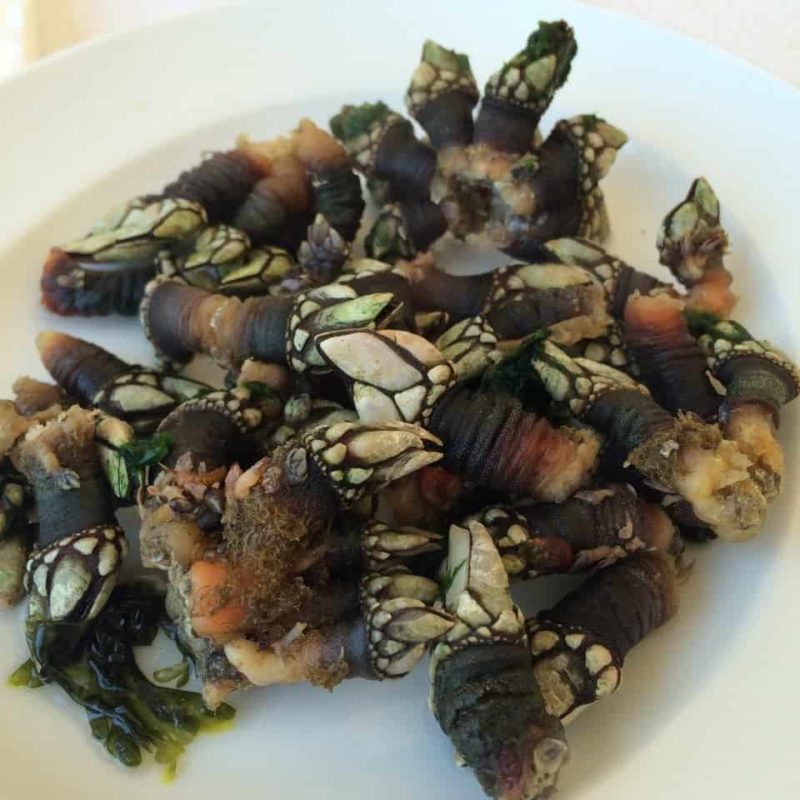
Percebes or goose barnacles are crustaceans that live and grow on rocks and ships in the Atlantic Ocean. Percebes are considered to be a delicacy in both Portugal and Spain and are a rare treat because they’re quite dangerous to acquire; local fishermen have to make dangerous dives to scrape the barnacles off the sides of cliffs that plunge deep into the water and are constantly hit by waves. Depending on the time of year a pound of percebes can range anywhere from €27 to €56 at the fish market with restaurants only serving to customers that call in and order a plate in advance.

We were lucky enough to try percebes not once, but twice while we were in Portugal – once in Almoçageme at Adraga Restaurante and the second time in Lisbon at Cervejaria Pinoquio. They’re best served steamed with aromas of the ocean wafting through the air (and splashing you in the face) as you snap off the neck and suck on what’s inside. Written by From Lou Lou and Jaf at Pint Sized Gourmets
Portugal Travel Guide – 27 must-visit places
Scorpions in Beijing China
The Beijing night market is a paradise for people who love to try weird things. Here you can buy scorpions that are still moving or sneak or sea stars. We visited the place with a couple of other bloggers. We were intrigued by the big black scorpions on the stick. The Beijing markets are a mecca for weird food and some of the most unusual foods I have ever seen.

They were not cheap, but we decided to drop a few dollars and try it. It is considered a pricey delicacy in China. The scorpions were dead luckily. They were on a stick. They were dry and crispy. It was like eating a piece of hard chips. I tasted a few of its legs. It was an experience I recommend to everyone, who visits Beijing. Written by Barbara at Jet-Settera
Crocodile, Frogs and Woodworms in the Philippines
When it comes to trying unusual foods, Asia has plenty to pick from!
Some of the most unusual food items I have tried on my travels are woodworms, crocodile meat and frog legs during my time in the Philippines.
Crocodile farming is popular in The Philippines, and meat is an excellent source of protein. There are numerous ways that the meat is prepared, but my favourite dish was crocodile sisig, made from crocodile mince, which is quite tasty. The meat tasted similar to beef.

However, the woodworms were entirely different. They’re supposed to be eaten dipped in vinegar with some chillies on the side. They taste naturally smoky as they’re found within dead mangrove trees. They’re also slightly sweet and taste similar to oysters. Woodworms are famous in The Philippines as a rare delicacy and die instantly as soon as they’re extracted from the plants.
The slimy texture did put me off, so I opted to have them deep-fried similar to onion rings. When it comes to frogs, the legs are the only edible parts. They’re slightly tough and less tasty than chicken in my opinion. They were stir-fried with spices and chilli oil, and it was quite difficult to get the meat off the legs!
While at the time I wasn’t aware that the crocodile is an endangered species, it was the only time I did consume the meat and have since then avoided it. From Lavinia at Continent Hop
Chapulines, Ant Eggs and Worms in Mexico
Right next to Teotihuacan – the famous archaeological remains near Mexico City, there’s one of these restaurants that don’t go unnoticed: La Gruta.
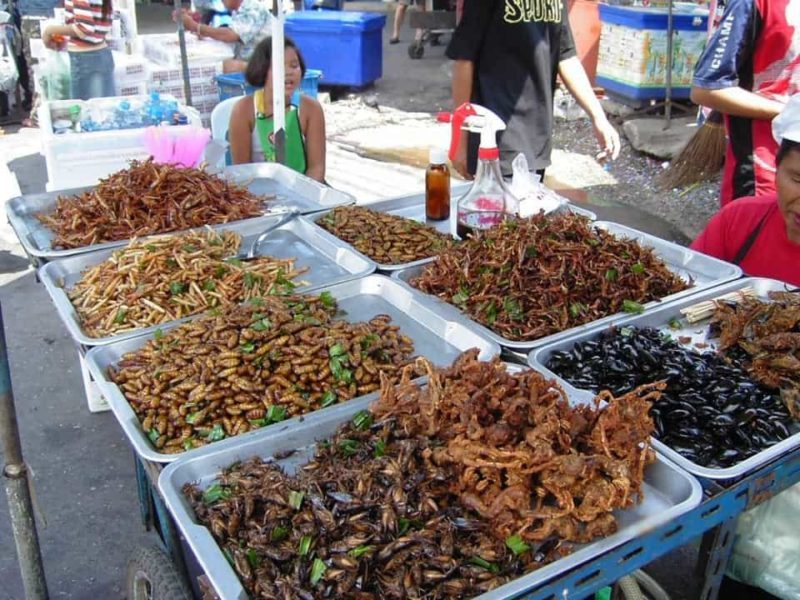
This restaurant has been there since 1928 when the grandfather of today’s owner, started serving meals to visitors, it is located inside a wide semi-open cave that was anciently used as a refrigerator for corn supplies. Nowadays, Carlos Cedillo, its executive chef, will make sure you leave it happy and willing to come back.
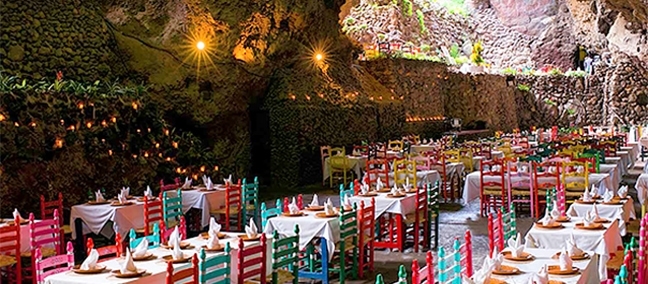
If you want to play tourist, try their Xoconostle margaritas, the homemade mole, chapulines (crickets and grasshoppers), escamoles (ant eggs), white worms, huitlacoche and quelites quesadillas, ram barbecue and elote cake for dessert. From Inma at A World to Travel
Grilled Chicken Buttholes in Taiwan
I’ve eaten quite a few weird foods on my travels- all manner of bugs in SE Asia, a horse burger in Slovenia. In Iceland, I tried whale, puffin and reindeer in the same meal. On a walking food tour in Morocco, I peeled back the face of a sheep to get to the roasted meat underneath. But nothing to me was stranger than the time I ate grilled chicken buttholes on a stick in Taipei, Taiwan.

I was in town to visit one of my favourite foodie friends and he did an incredible job of organizing an overview of the city for us. We tried everything from street noodles to Michelin-star restaurants.
One night he took us to Shilin night market, the largest and most famous night market in Taipei. There we found carts selling everything imaginable. We tried unique local dishes such as blood cakes crusted in peanuts and the legendary stinky tofu. We also tried more standard fare such as steaks and fried chicken.
One cart we found was offering skewers with a translation that said “chicken anus”. I thought maybe the translation was incorrect until my friend told me that no, in fact, they were offering grilled chicken buttholes on a stick.
They didn’t think I would try them so of course, I had to, for the photo if nothing else. The actual taste wasn’t that bad- grilled meat is grilled meat. Mostly it tastes about the same. But years later I’m still left wondering- what was the crunchy bit? Why would a grilled chicken butthole have a crunchy bit? I’m still not convinced that it wasn’t a chicken haemorrhoid. Nathan from Foodie Flashpacker
Casu Marzu in Italy
Italian cheese is known worldwide. I’m sure you’ve tried Mozzarella or Mascarpone before. But have you ever heard of Casu Marzu? It is a special type of cheese, that originally comes from Sardinia. It also has different variations across other Italian regions.
This traditional sheep milk cheese has a very interesting making process. Casu Marzu is created by fermentation and decomposition, which is brought about by the digestive action of the live larvae. The insects are introduced to the cheese, which helps to break some of the cheese fats and makes it really soft. Sounds yummy, right?

Some time ago, I stayed in Italy while working on a university project. Me and my friends were lucky enough to be hosted by a wonderful Italian family spoiling us every day with amazing homemade food. One time, they brought us different types of cheese to try. It was a variety of Casu marzu.
The cheese is considered a delicacy in Italy and it was specially prepared following the old family recipe. I didn’t want to be rude and my curiosity won, so I decided to try a bit of it. I examined the tiny piece thoroughly before eating it, making sure, that all the larvae are gone from it.
The cheese was quite tasty and had an interesting texture. When my Italian hosts were cutting a piece off, we could see the moving worms at the top of the cheese block. Some people clear the larvae before consuming the cheese, as I did, but others decide not to. It’s still safe to eat the cheese like this.
This was definitely an interesting experience for me and gave me a whole new idea about Italian cheese. Would you try Casu marzu yourself? Agnieszka from Woldering Around
Alpaca in Peru
My husband and I spent 2 months in Peru without ever trying Cuy. Cuy is the guinea pig: it’s usually fried until crispy and you’ll see it in most mercados and on traditional menus throughout Peru. But it really looks like a guinea pig. And guinea pigs are adorable. Plus, my husband’s little sister said she’d disown us if we ate an adorable guinea pig. So we didn’t try it. What we did try, at a restaurant in Ollantaytambo near the Sacred Valley, was alpaca.
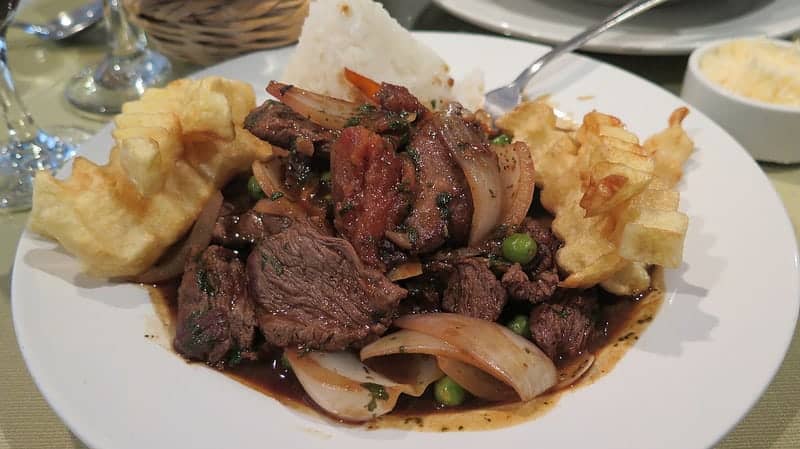
Alpacas are arguably cuter than guinea pigs, but we’d read that they’re only ever eaten after they’ve lived long, fruitful, happy lives (because they’re used for fur and labour until then). So we felt less guilty eating an alpaca than a guinea pig. We had just failed our Inca Trail trek and were killing time in Ollantaytambo before heading to Machu Picchu when we wandered into a small restaurant and saw a familiar dish on the menu: Lomo saltado, a delicious traditional Peruvian stew. Only this time, with alpaca. So we thought, what the heck. We tried it.
And you know what? It was tough, chewy, and gross. It tasted exactly like you’d expect old alpaca to taste like. Scratch this one off your must-try list and go hug a fluffy live alpaca instead! Lia and Jeremy from Practical Wanderlust
Arctic Edibles
Spending time in the Canadian Arctic, the local food scene isn’t exactly what one might think of nor is it easy to discover. It consists of traditional indigenous foods from the land, harvested for centuries for survival and prepared simply if at all. Over the course of 2017, I was lucky enough to try a few since it’s not a simple matter of going to a market or restaurant.

Seal is eaten often raw, boiled and fried, but the most interesting would be the raw brain. ‘Inuit ice cream’ as they called it, it was chopped up like tartar almost immediately after the kill. A snack while butchering the rest, the metallic taste of blood lingers, leaving a tingling sensation on your lips. There is a mild nuttiness and a smooth creamy texture, it is quite pleasing on the palate if you can remove the idea of what you are eating from your mind.
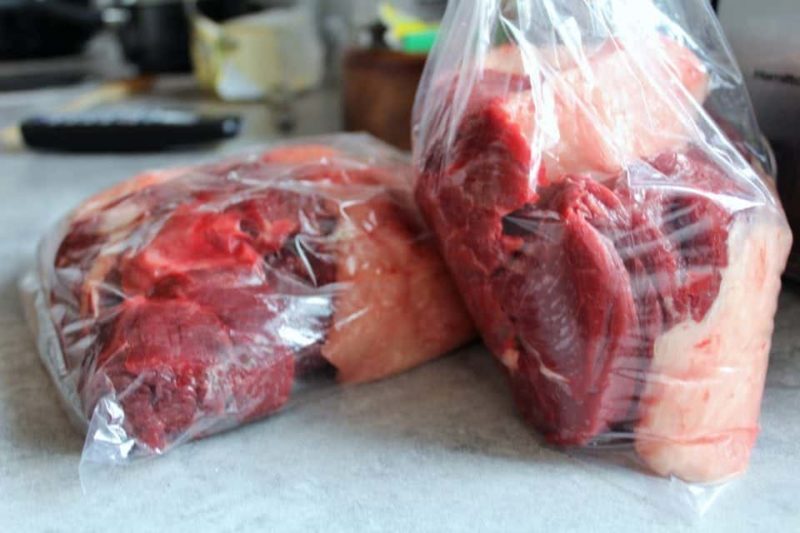
Muktuk or Maktaaq is the skin and first layer of blubber on the narwhal, beluga or bowhead whale. Muktuk is craved by the Inuit population and is vital to their diet containing more vitamin C than an orange. Quite often frozen, this year I got a taste fresh off a kill. Neutral in flavour, anyone who enjoys sushi would like this. BUT, there is a textural issue. The layer of blubber almost melts in your mouth leaving an oily residue and the skin is like hard rubber. Never truly able to fully chew it, after a few chunks I’m finished with sore teeth.
Obviously, these are not unusual foods in this region of the world – they may taste weird to our Westernized palates but these unusual foods are survival food in the harsh climates of the North.

Here is one that I’m sure angers a few. Polar Bear is something I never thought I would eat until well, I had a bag of freshly butchered meat from a hunter. Hunted sustainably and only by the Inuit population, it’s rare to get the chance to eat this food not being a local. The meat/fat needs to be boiled for 2-3 hours minimum to become edible at which point it shreds like that of a pulled pork and the flavour I describe as fishy pork if you can wrap your head around that. The fat is pungent but eaten together it is quite pleasant. Jason from Edible Adventure Travel
Eating unusual foods around the world is a travel blogger’s dream – sometimes!
Escamoles from Guanajuato, Mexico
Escamoles (ant eggs) may seem disgusting at first glance, but they are actually quite tasty! In Guanajuato, Mexico, escamoles are considered a delicacy and are widely known as Mexican caviar.
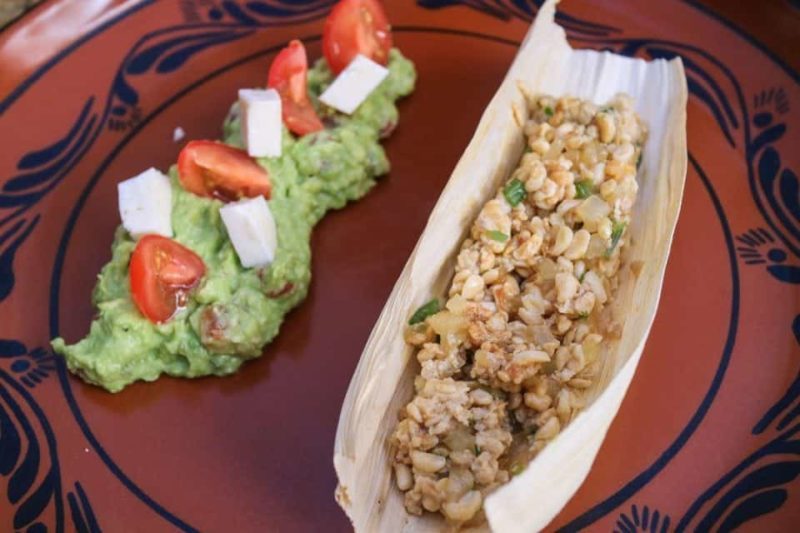
These edible larvae are harvested from the roots of agave plants, which are only grown in a hot and arid climate. Because they are difficult to collect and are only available between February and May, escamoles can get very expensive.
Oftentimes, escamoles are pan-fried with onion and chilli and eaten by themselves. Or you can also add them to tacos or omelettes. They have a surprisingly nutty and buttery taste. Next time, you’re in Guanajuato or Central Mexico, you gotta give it a try! Cat and Kev from For Two Plz
Fried Hornets in Northern Myanmar
Trekking in off-the-beaten-track locations and staying with the local folks means that you eat like locals. We were trekking in Shan State, Northern Myanmar with another couple and a guide. Our accommodation for the night was a makeshift bed in a room with no window. Our dinner was communal and breakfast was in the open-to-the-elements kitchen. Black tea from the local plantation, eggs, vegetables and fried hornets. Yes, you read that right. Fried hornets.
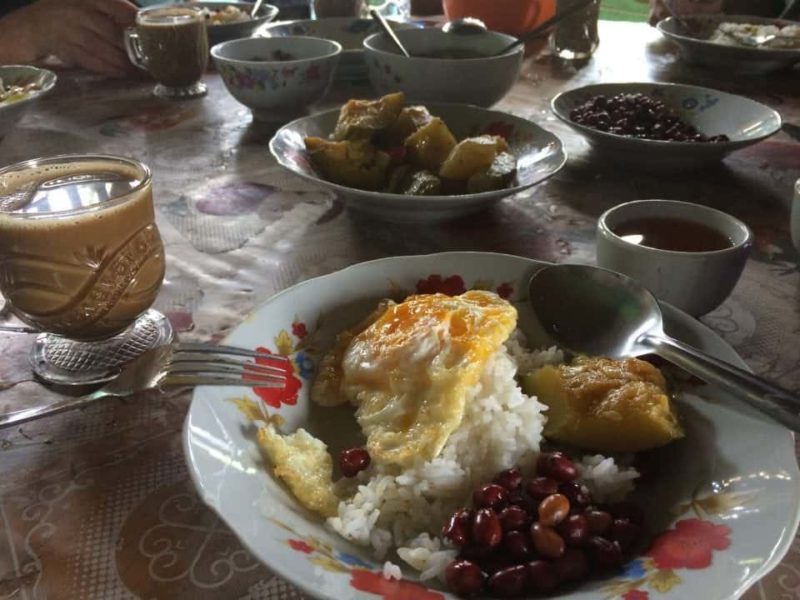
Now they were delicately fried, this was no deep-fried, battered-up nonsense. They were very distinguishable as hornets, their relatives buzzed around my head to remind me of their sacrifice. The Hornets on my plate had a slightly crunchy texture, they required a little chewing. I knew my teeth were crunchy through a wing and a body part. The taste was almost chicken-like, especially when drowned in hot sauce and mixed in with a fried egg.
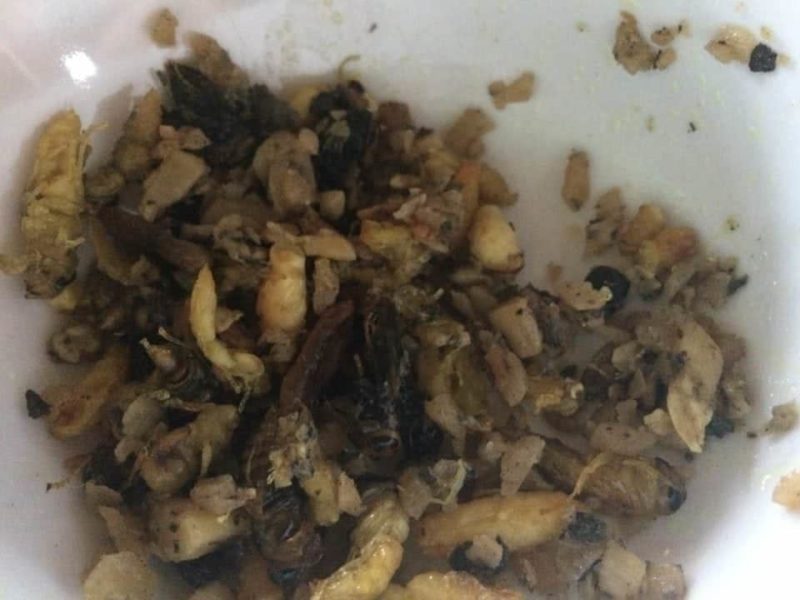
The hornet is a subset of the wasp and eats pests like aphids. They also have a sweet tooth and like sugar, tree sap and other insects, like bees. They’re a big source of protein and the locals that we stayed with take their protein where they can find it. And that’s a method supported by the World Health Organization (WHO), which recommends that we eat more insects. Hornets are an invasive species and a natural predator of the honey bee. You’ll be doing the world a favour by eating the hornet, which can eat up to 50 bees a day! Sarah and Nigel from A Social Nomad
Buffet of Unusual Foods – insects
If anyone asked me to describe an unusual meal I would have to say a buffet of bugs in China. Like many countries, China has endured great famines. During these times of devastation and social upheaval societies struggle to survive, frequently eating whatever they can. This has resulted in a culture that offers what Westerners would consider unusual foods, mainly insects, as a perfectly acceptable menu option. But are these proponents of, shall we say, “creative cuisine” way ahead of their time? Perhaps. It turns out that insects are low in fat and high in protein and fibre. Sounds like an advertising slogan for a modern-day protein bar.
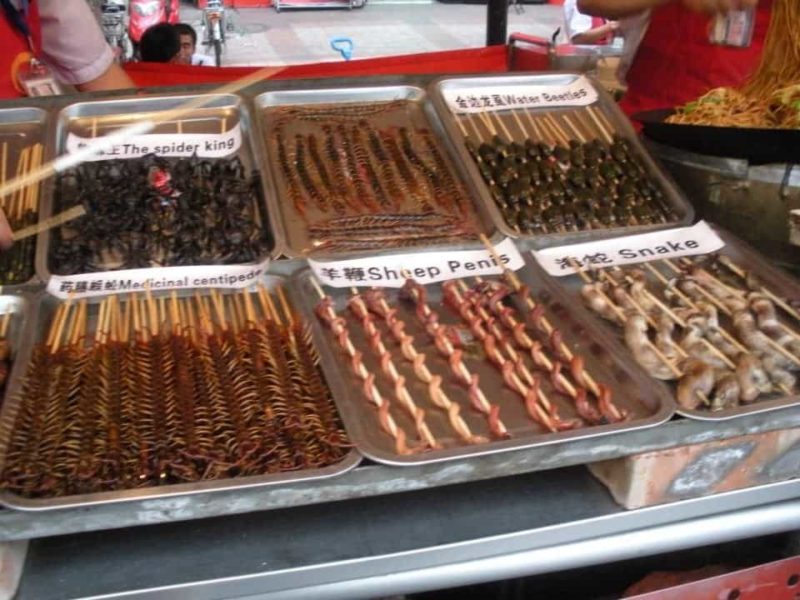
There are thousands of insects scientists classify as edible; spiders, centipedes, water beetles, ants. Centipedes and beetles are the most common. They have been around 400 million years before humans and will probably outlive us as well. A steady, reliable, plentiful and renewable source of food… if you can get over the “yuk” factor. Two factors are changing the way insects are viewed as a source of food. One, the U.N. is sponsoring several projects aimed at alleviating hunger in several parts of the world by farming edible insects.

On the other end of the economic spectrum are those that practice entomophagy, insect-eating for the fun of it. Renowned chefs are now experimenting with different insect recipes designed to appeal to the affluent tastemakers. So don’t be surprised if the buffet of unusual foods you saw on a Chinese side street now appears in a fashionable bistro served with a side of sheep penis! Talek from Travels with Talek
So you see travel bloggers will really try anything once, We Travel for Food is another blog collaboration with travellers who love their foodl This one you may find a tad more palatable.
What is the most unusual or weird food you have ever eaten?
You might also like
Best food markets and food halls in N. America
Food in Malta – the ultimate guide
French Food Culture: The Ultimate Guide
Yucatan Food – deliciously earthy, hot and smoky
Spanish Food: 40 of the best foods in Spain
59 Traditional British Foods – from the sublime to the WTF
Food in Brittany: Fall in love with the food of Bretagne
What to eat in Rome the superb food of Italy
French Cheese – 23 amazing types of French cheese
Pin it

